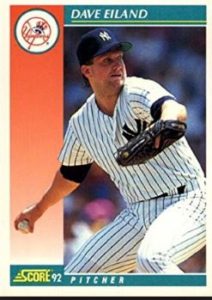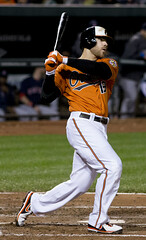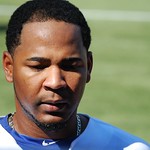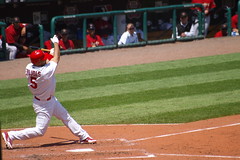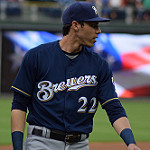Four-homer games (by a single player) are a relative rarity in major league baseball. For example, only 18 players have launched four homers in a single game, while 23 pitchers have tossed perfect games. In this post, Baseball Roundtable takes a look at MLB’s four-homer games. If you joined this post via a link from a BBRT Trivia Teaser, the answer is in the box below.
Baseball Roundtable Trivia – The City of Brotherly Love
Despite playing for Philadelphia – The City of Brotherly Love – Phillies’ third baseman Mike Schmidt showed no love for the Reuschel brothers on April 17, 1976. On that day, as the Phillies topped the Cubs in an 18-16 slug fest, Schmidt popped an MLB-record (tying) four home runs – including two off starter Rick Reuschel and one off his brother Paul Reuschel. It’s the only time brother have shared victim status in a four-dinger assault.
Now, before we look at each four-homer game in detail, here are a fewer four-homer game trivia tidbits.
Homers, Just Not at Home …
Just five of the 18 four-homer games were achieved by batters hitting at home.
- In four-homer games, the team boasting the four-homer performer has won 16 of the 18 contests.
- Four-homer games have been recorded by 11 right-handed hitters; six lefties; and one switch hitter.
- Two batters have included a two-home run inning in their four-homer games; Mike Cameron, Mariners (2002) and Bobby Lowe, Beaneaters/Braves (1894).
- Only two batters were walked during their four-dinger outbursts – Rocky Colavito (1959) and Pete Seerey (1948), with one free pass each. (Mike Cameron was hit by a pitch in the midst of his powerful 2002 performance. I’m a bit surprised he’s the only one.)
This Side Seems to be Working Today …
Mark Whiten, the only switch hitter with a four-homer game, hit all four of his dingers from the left-hander’s batters’ box.
- The Braves’ franchise has had the most four-homer games with three – one each in Boston (Beaneaters); Milwaukee; and Atlanta. The hitters were Bobby Lowe (1894); Joe Adcock (1954); and Bob Horner (1986).
- By position, six first basemen have put up four-homer games; five right fielders; three center fielders; two left fielders; one second baseman; and one third baseman. No catchers, shortstops or pitchers have smacked four homers in a game.
- Five Hall of Famers had four-homer games: Ed Delahanty (1896); Lou Gehrig (1932); Chuck Klein (1936); Willie Mays (1961); and Mike Schmidt (1976).
- Three players needed extra innings to get that fourth home run: Chuck Klein (1936); Pete Seerey (1948); and Mike Schmidt (1976).
It Was an Inside Job …
Two of the home runs in Ed Delahanty’s July 13, 1986 four-homer game were of the “inside-the-park” variety. He is the only player to include an inside-the-park round tripper in a four-homer outburst.
- Appropriately, seven of the players turning in four-homer games were batting cleanup; five were batting third; two each were in the fifth and sixth spots; and one each occupied the lead-off and number-seven holes. No second, eighth or ninth batter has turned in a four-homer game.
- Shawn Green set the top marks for runs and hits in a four-homer game at six. In his May 23, 2002, performance for the Dodgers (who beat the Brewers 16-3) he also set the MLB single-game record for total bases at 19 (four homers, a double and a single).
- The age window for four-homer games is narrow. The youngest player ever to record one was Pat Seerey (25 years – 123 days). The oldest was Chuck Klein (31 years – 257 days).
- In 14 of the 18 games, the four-homer performance got exactly four hits.
I Like a Little Company …
The most RBIs in a four-homer game belong to the Cardinals’ Mark Whiten, who drove in an MLB single-game, record-tying dozen Cardinals’ teammates – as St. Louis topped the Reds 15-2 on September 7, 1993. On the other side of the coin, Mike Cameron drove in the minimum four tallies with his four round trippers, as his Mariners beat the Sox 15-4 on May 2, 2002.
- July is the most popular month for four-homer games, with five occurrences. It’s happened four times in May, three each in June and September, twice in April and once in August.
- Only three players have collected their four home runs off four different pitchers: Gil Hodges (1950); Joe Adcock (1954); and J.D. Martinez (2017).
- Only two players have logged all four round trippers on their big day against just one pitcher: Ed Delahanty, Quakers/Phillies (1896); Bobby Lowe, Beaneaters/Braves (1894).
- Teams having a player belt four homers in game have outscored their opponents by a 246-124 margin – reaching a high of 20 runs scored twice.
- The fewest runs scored by a team with a player stroking four round trippers in a game is eight – and, in both cases, the eight runs were not enough to win. Ed Delahanty’s Phillies lost 9-8 (July 13, 1896) and Bob Horner’s Braves lost 11-8 (July 6, 1986).
_________________________________________________________
Now let’s look at these offensive outbursts game–by-game, starting with the most recent and working our way back.
J.D. Martinez, Diamondbacks – September 4, 2017
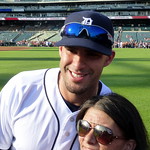
Photo by GabboT 
Martinez – batting fourth and playing RF – started the evening slowly, with a swinging strikeout off Dodgers’ starter Rich Hill leading off the second inning. He went on to hit: a two-run homer to left-center off Hill in the fourth; a solo shot to right field leading off the seventh against Pedro Baez; another solo homer, this time to right-center, off Josh Fields in the eighth; and a second two-run blast (left field) off Wilmer Font in the top of the ninth. The D-backs won 13-0 and Martinez was 4-for-5, with four runs scored and six RBI.
Martinez logged his four-homer game after being traded mi-season. (He was traded form the Tigers to the Diamondbacks on July 18). He ended the 2017 season with a .303-45-104 line. Still active, he is now in his ninth season and has a career line of .294-199-619 as this is written (as of April 28). He has topped 30 home runs in three seasons, with a high of 45 in 2017 and 43 in 2018.
___________________________________________
Scooter Gennett. Reds – June 6, 2017
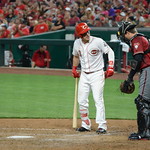
Photo by haydenschiff 
Okay, four-homer guys have (well-earned) nicknames like The Iron Horse, Rocky and The Hammerin’ Hoosier. Ryan “Scooter” Gennett is a bit of an exception to that rule.
Gennett started the Reds’ game against the Cardinals batting fifth and playing left field. Going into the contest, he was hitting .270, with just three round trippers and 20 RBI on the season (46 games played). He dramatically improved those numbers that early June evening.
Gennett started simply enough, with a run-scoring single off Adam Wainwright in the bottom of the first. The next time he faced Wainwright was in the third, with the bases loaded and one out. Gennett responded with a Grand Slam to deep right. So far, two-for-two with a homer and five RBI, but the night was young. With the Reds up 8-0, Gennett faced reliever John Gant in the fourth inning – and stroked a two-run home run to deep center. Two innings later, with Gant still in the game and the Reds up 10-0, Gennett went yard again – a solo short to down the left field line. Then in the eighth, apparently wanting to prove this power surge was no fluke, he added another two-run shot, this time off John Brebbia.
Gennett’s night? He went five-for-five, with four homers, four runs scored and ten RBI – as the Reds won 13-1. In that one game, he raised his average 30 points (.270 to .302); more than doubled his season home run total (from three to seven); and raised his RBI total by 50 percent (20 to 30). He finished the season at .295-27-97. Still active, Gennett (on the IL so far this season), has a .289 average, with 85 home runs and 349 RBI over six MLB seasons. He hit 20+ home runs in 2017 and 2018.
__________________________________________
Josh Hamilton, Rangers – May 8, 2012
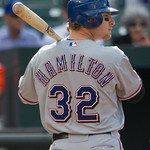
Photo by Keith Allison 
Good things apparently come in twos. Hamilton popped four two-run homers on his big night. They were his numbers 11-14 for this season. Hamilton was batting third and playing CF.
The 2010 AL MVP started with a two-run shot off the Orioles’ Jake Arrietta in the top of the first inning; touched Arrietta for another two-run blast in the third; doubled to right off Arrietta in the fifth; homered with a runner on off Zach Phillips in the seventh; and capped it off with another blast (this one off Darren O’Day) in the eighth. His final line for the day: five-for-five (four homers and a double), four runs scored and eight RBI.
Hamilton finished the season at .285-43-128. He hit .290, with 200 home runs in nine MLB seasons.
___________________________________________________
Carlos Delgado, Blue jays – September 25, 2003
By the time Carlos Delgado had his four-homer game, he already had 299 MLB round trippers and was in his seventh consecutive campaign of 30 or more home runs. In his big game, Delgado was playing first and batting cleanup. The slugger hit a three-run shot off the Rays’ Jorge Sosa the bottom of the first inning. His next three round trippers would all come leading off an inning: a solo short off Sosa leading off the fourth; another solo home run leading off the sixth, off Joe Kennedy; and a final solo homer off Lance Carter to start the eighth.
Delgado ended the day four-for-four, with four home runs and six RBI. He finished 2003 with a .302 average, 42 home runs and an AL-leading 145 RBI (his sixth straight campaign of 100+ RBI). He retired in 2009, with a .280 career average, 473 home runs and 1,512 RBI in 17 MLB seasons.
_______________________________________________
Shawn Green, Dodgers – May 23, 2002
 Green was batting third and playing right field for the Dodgers on his big day – arguably the best day anyone ever had at the plate. Not only did he bang out four home runs, he added a double and a single in a six-for-six performance.
Green was batting third and playing right field for the Dodgers on his big day – arguably the best day anyone ever had at the plate. Not only did he bang out four home runs, he added a double and a single in a six-for-six performance.
Green’s day went like this: RBI double off Glendon Rusch in the top of the first; three-run homer off Rusch in the second inning; lead-off homer of Brian Mallette in the fourth; solo shot of Mallette in the fifth; single off Jose Cabrera in the eighth; a solo home run with two out in the ninth off Cabrera. Green’s ninth-inning shot was one of three back-to-back home runs in the inning (3B Adrian Beltre – Green – 2B Dave Hansen). The Dodgers topped the Brewers (in Milwaukee) 16-3 – hitting eight home runs in the process.
Shawn Green’s 19 total bases on May 23, 2002, stand as the MLB single-game total-base record.
Green ended the season at .285-42-112, notching his third 40+ home run season. He finished his 15-season MLB career at .283-328-1,070.
______________________________________________
Mike Cameron, Mariners, May 2, 2002
Cameron, starting in RF and batting third, got his four-homer game off to a good start, going yard twice in the top of the first inning (as the Mariners scored ten times). Those round trippers came off Jon Rauch and Jim Parque. (Rauch retired only one of the nine batters he faced.)
Tee (off) for Two …
Each of the home runs that Mike Cameron hit in the first inning of that May 2, 2002 Mariners’ game against the White Sox was immediately preceded by a home run off the bat of Mariners’ 2B Brett Boone. It is the only time two MLB players hit back-to-back home runs TWICE in the same inning.
Cameron added solo home runs off Parque in the third and fifth innings – giving him four home runs in the first five innings (and the Mariners as 13-1 lead). His next at bat came in the seventh, but his didn’t get a chance to make history with a fifth long ball. He was hit, in the leg, by a pitch from Mike Porzio – causing even the White Sox home crowd to boo. Cameron did get one more at bat – lining out to the warning track in right field in the top of the ninth. For the day, he was four-for-five, with four runs scored, four RBI and, of course, four home runs. Seattle won the contest 15-4.
Cameron finished the season at .239-25-80 – one of eight seasons (in a 17-season MLB career) in which he topped 20 home runs (he hit a career-high 30 in 2004). For his 17-season MLB career, Cameron was .249-278-968, with 297 steals.
__________________________________________
Mark Whiten, Cardinals, September 7, 1993
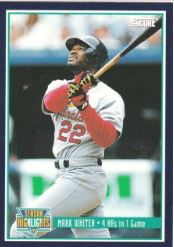 Whiten was playing CF and batting seventh for the Cardinals (at Cincinnati) when he had his four -homer day. It was in the second game of a double header. In the contest, Whiten went four-for-five with four runs scored and 12 RBI – as St. Louis won 15-2. (The Redbirds had lost the opener 14-13. So, despite scoring 28 rims in the twin bill, all they got was a split).
Whiten was playing CF and batting seventh for the Cardinals (at Cincinnati) when he had his four -homer day. It was in the second game of a double header. In the contest, Whiten went four-for-five with four runs scored and 12 RBI – as St. Louis won 15-2. (The Redbirds had lost the opener 14-13. So, despite scoring 28 rims in the twin bill, all they got was a split).
Mark Whiten’s 12 Runs batted in Game Two of that September 7, 1993 twin bill is the MLB RBI record (tied with Jim Bottomley) for a single game.
Whiten hit a Grand Slam off Larry Leubbers in the top of the first; popped to third off Leubbers in the fourth; knocked a three-run homer off Mike Anderson in the sixth; smacked a two-run shot off Anderson in the seventh; and launched a two-run shot off Rob Dibble in the ninth. (Hit, knocked, smacked, launched – so many ways to describe a long ball.)
While Whiten is a switch hitter, he hit all four of his homers in his record-tying game left-handed.
Whiten finished the season at .253-25-99, with 15 steals. It was one of only two seasons in which he would hit at least 20 home runs. His career line was .259-105-423.
__________________________________________
Bob Horner, Braves, July 6, 1986
Horner was playing first base and batting cleanup on the day he put four balls out of the yard. And, despite his efforts, the Braves lost to the Expos (in Atlanta) by a 13-8 score. Horner homered to lead off the bottom of the second (off Andy McGaffigan); hit another solo shot off McGaffigan in the fourth; hit a three-run homer (again off McGaffigan) in the fifth (ending McGaffigan’s outing); fouled out off Tim Burke in the seventh; and touched Jeff Reardon for a solo homer in the bottom of the ninth. (Touched – a softer way to say blasted.)
Horner ended the game four-for-five, with four runs scored and six RBI. He finished the season at .273-27-87 and his career line was .277-218-685 (10 MLB seasons). He hit 20 or more home runs in seven season and topped 30 three times.
_______________________________________________
Mike Schmidt, Phillies, April 17, 1976
Schmidt – playing third base and batting sixth as his Phillies faced the Cubs in Chicago – got off to a slow start on his four-homer day. He flied out to center in the second inning and singled to left in the fourth. Not only that, the game was looking pretty much out of hand, and not in the way you might have expected. When Schmidt poked his first home run – a two-run shot in the fifth off Rick Reuschel – it cut the CUBS’ lead to 13-4. Two innings later, Schmidt popped his second homer, a solo shot off Reuschel – reducing the Cubs lead to 13-7. In the eighth, with the Phillies storming back, Schmidt homered again. This time it was off reliever Mike Garman – a three-run blast that got the Phillies within one at 13-12.
Then a bit of luck intervened to give Schmidt his shot at four long balls in one a game. The Phillies took the lead 15-13 in the top of the ninth, without Schmidt coming to the plate. It looked like his day was over. The Cubs, however, tied it at 15 in the bottom of the inning, and Schmidt hit a two-run homer of Paul Reuschel (Rick’s brother) in the top of the tenth. The Phillies eventually won 18-15 and Schmidt went five-for-six, with four runs scored and eight RBI.
Schmidt finished the season hitting .262, with 107 RBI and a NL-leading 38 home runs (it was his third consecutive NL home run crown). He eventually led the league in round trippers eight times and put up a .267-548-1,595 line. Notably, Schmidt’s also stole 174 bases in his 18-season MLB career – with a high of 29 in 1975. The three-time MVP also earned 10 Gold Gloves.
_______________________________________________
Willie Mays, Giants – April 30, 1961
The Say Hey Kid started in center field, batting third, against the Braves (in Milwaukee) on April 30, 1961. He took Lew Burdette deep (solo) in the first inning; added a two-run shot off Burdette in the third; flew out to center off Moe Drabowsky in the fifth; hit a three-run shot off Seth Morehead in the sixth; and topped off his day with a two-run homer of Don McMahon in the eighth. The Giants won 14-4, with Mays going four-for-five, with four runs scored and eight RBI.
Mays finished the 1961 season at .308-40-123. In his 22-season MLB career, he had six seasons with forty of more home runs (two of those with 50+) and won four league home runs crowns and four league stolen base titles. His final stat line was .302-660-1,903, with 3,283 hits and 338 stolen bases.
__________________________________________
Rocky Colavito, Indians – June 10, 1959
Colavito was playing RF and batting cleanup for the Indians (at the Orioles) when he put up his four-homer day. He walked in the first – appropriately by Orioles’ starter Jerry Walker – which might have been a good strategy for the day. He then hit a two-run home run off Walker in the third (driving in Vic Power who had been walked by Walker). In his next at bat, in the top of the fifth, Colavito hit a solo home run off Arnie Portocarrero. He added to his day in the sixth, with another homer (two-run) off Portocarrero and, in the ninth, with a solo shot off Ernie Johnson. The Indians prevailed 11-8, with Colavito going four-for-four, with five runs scored and six RBI.
Colavito ended the 1959 season with a .257 average, a league-topping 42 home runs and 111 RBI. In his 14-season MLB career he topped 30 home runs in seven seasons (40+ homers three times). His career line was .266-374-1,159.
After his league-leading 42 home runs in 1959 (and, of course, his four-homer game), Rocky Colavito was traded by the Indians to the Tigers for 1959 AL batting champ (.353) Harvey Kuenn. The only time a defending HR champion has been traded for a batting champion.
__________________________________________
Joe Adcock, Braves – July 31, 1954
Adcock was playing first base and batting fifth (versus the Dodgers in Brooklyn), when the Milwaukee Brave had a four-homer day. Surprisingly, the two hitters immediately preceding him in the lineup – future Hall of Famers Hank Aaron and Eddie Mathews – never accomplished the feat. Adcock started his assault with a home run off Don Newcombe leading off the second inning. He then doubled off Erv Palica in the third (at this point in the game, Mathews had two home runs and Adcock one). Adcock added a three-run homer off Erv Palica in the fifth; a two-run shot off Pete Wojey in the seventh; and solo round tripper off Johnny Padres leading off the ninth. The Braves won the game 15-7, with Adcock going five-for-five (four homers and a double), with five runs scored and seven RBI.
Adcock finished the 1954 season with a .308-23-87 stat line and was .277-336-1,122 in a 17-season MLB career (topping 20 home runs in seven campaigns).
The day after his four-homer game, Joe Adcock collected one double in two at bats before being hit by a Clem Labine fastball to the batting helmet (knocking Adcock out of the game – pun intended) in the fourth inning. The Braves were ahead 8-2 at the time.
__________________________________________
Gil Hodges, Dodgers – August 31, 1950
Hodges was playing first base and batting sixth for the Dodgers when he exploded for four home runs against the Boston Braves (in Brooklyn). He started in style with a two-run home run off lefty Warren Spahn in the second inning. He went on to hit a three-run homer off Normie Roy in the third; a two-run homer off Bob Hall in the sixth; a single off Johnny Antonelli in the seventh; and a two-run home run off Antonelli in the eighth. He also grounded out off Mickey Haefner in the fourth inning.
The Dodgers won 19-3, with Hodges going five-for-six (four homers and a single), scoring five times and plating nine. Hodges went .283-32-113 for the season. In his career, he put up a .273-370-1,274 stat line in 18 seasons. He hit 20 or more home runs in 11 seasons (with a high of 42 in 1954).
_________________________________________
Pete Seerey, White Sox – July 18, 1948
Seerey got his four-homer game in the first game of a double header. Seerey was in left field batting cleanup that day; as his White Sox took on the Athletics in Philadelphia.
It didn’t start out that well for Seerey, as he struck out of Carl Scheib to open the second inning. He warmed up in the fourth, touching Scheib for a home run to open the inning. He added a two-run home run off Scheib in the fifth and a three-run long ball off Bob Savage in the sixth. He then popped out to the catcher (off Bubba Harris) in the seventh and walked (off Joe Coleman) in the ninth.
Fortunately for Seerey, eleven proved to be a lucky number. The game was knotted at 11-11 after nine, so he got another chance to hit. That came in the 11th inning – and Seerey delivered a home run off Lou Brissie. The White Sox won 12-11 and Seerey went four-for-six, with four runs scored, seven RBI, a walk and a strikeout.
Seerey finished the season at .229 with 18 home runs and 64 RBI. In a seven-season MLB career (mostly in the WW II years), Seerey hit .224 with 86 home runs and 261 RBI. He led the AL in strikeouts in four of his seven campaigns.
____________________________________________
Chuck Klein, Phillies – July 10, 1936
 Klein was batting third and playing right field when his four-homer day helped the Phillies defeat the Pirates in Pittsburgh by a 9-6 score. Klein hit a three-run homer off Jim Weaver in the first inning; popped out against Weaver in the third; led off the fifth with a homer (again off Weaver); and hit a solo shot off Mace Brown in the seventh.
Klein was batting third and playing right field when his four-homer day helped the Phillies defeat the Pirates in Pittsburgh by a 9-6 score. Klein hit a three-run homer off Jim Weaver in the first inning; popped out against Weaver in the third; led off the fifth with a homer (again off Weaver); and hit a solo shot off Mace Brown in the seventh.
Ah, Lady Luck. The game went into the bottom of the ninth with the Phillies up 6-4 and Klein sitting on three home runs. The Buccos scored twice to tie it and Klein got another at bat – leading off the tenth – in which he popped his fourth home run; this one a lead-off shot off Bill Swift.
Klein ended the game four-for-five with four runs scored and six RBI. He hit .306 for the season, with 25 home runs and 104 RBI. He finished his 17-season MLB career at .320-300-1,201 and was a four-time league leader in home runs.
1933 A Royal Year for Philadelphia Baseball
Chuck Klein won the NL Triple Crown with the Phillies in 1933 – going .368-28-120. It was the only season in which both the NL and AL featured a Triple Crown winner and they were both from the same city – as the crosstown AL Philadelphia Athletics’ Jimmy Foxx took the AL Triple Crown (.356-48-163).
________________________________________
Lou Gehrig, Yankees. – June 3, 1932
Lou Gehrig was the first player to notch a four-homer game post-1900. On June 3, 1932, as the Yankees took on the Athletics in Philadelphia, Gehrig was at first base and batting cleanup. And cleanup he did, starting with a two-run homer in the first inning off George Earnshaw, followed by a solo shot off (again off Earnshaw) leading off the fourth, another solo homer off Earnshaw in the fifth (back-to-back with Babe Ruth) and a solo home run off Roy Mahaffey leading off the seventh. In his final two at bats, he grounded out against Lew Krausse in eighth and hit a fly to wall in center off Eddie Rommel in the ninth (that came close to being home run number five).
Gehrig ended the day four-for-six with four runs and six RBI, as the Yankees topped the Athletics 20-13. Gehrig finished the 1932 season at .349-34-151 – and put up a career line (17 seasons) of .340-493-1,995. He led the AL in home runs three times (and had five seasons of 40+ homers), RBI five times and won one batting title.
___________________________________________
Ed Delahanty, Phillies (Quakers) – July 13, 1896
Delahanty was playing 1B and batting cleanup as his Phillies took on the Cubs in Chicago on July 13, 1896. In the first inning of that contest, Delahanty hit a two-run, inside-the-park home run off William “Adonis” Terry (who would pitch the whole game). In the third, he added a single and the fifth inning he launched a three-run shot over the right field scoreboard. In the seventh, with his team down 9-6, Delahanty hit a drive to deep center for a second inside-the-park home run and, finally in the ninth, Delahanty homered for the record-tying fourth time. Despite Delahanty’s heroics, the Philadelphia squad lost 9-8.
Delahanty ended the day five-for-five, with four runs scored and seven RBI. He finished the 1896 season at .397, with an NL-leading 13 home runs and a league-topping 126 RBI. Over his 16-season MLB career, Delahanty hit .345, with 101 home runs and 1,466 RBI – as well as 456 stolen bases. He won two batting titles (and hit over .400 in three seasons), led the league in doubles five times, RBI three times, home runs twice, triples once and stolen bases once.
_______________________________________
Bobby Lowe, Beaneaters (Braves) – May 30, 1894
Lowe was playing second base and leading off for the Boston Beaneaters (versus the Cincinnati Reds in Boston) when he enjoyed his four-homer afternoon. It came in the second game of a split-admission double header. (Boston won the morning contest 13-10.)
Lowe was put out to start the game, but homered twice in the third inning off Reds’ hurler Elton “Icebox” Chamberlain (who would pitch the entire game – despite falling behind 11-2 after three frames). Lowe homered again in the fifth and sixth innings and added a single in the seventh – as Boston prevailed 20-11. He ended the day five-for-six with four runs scored and six RBI – and finished the season at .346-17-115, notching what would prove to be career highs in all three categories. For his 18 MLB seasons, Lowe went .273-71-989, with 303 stolen bases.
Primary resources: Baseball-Reference.com; Baseball-Almanac.com; MLB.com
BASEBALL ROUNDTABLE ON THE TOP 100 BASEBALL BLOG LIST
 Baseball Roundtable is on the Feedspot list of the Top 100 Baseball Blogs. To see the full list, click here.
Baseball Roundtable is on the Feedspot list of the Top 100 Baseball Blogs. To see the full list, click here.
I tweet baseball @DavidBBRT
Follow/Like Baseball Roundtable’s Facebook Page here. More baseball commentary; blog post notifications; PRIZES.
Member: Society for American Baseball Research (SABR); The Baseball Reliquary; The Negro Leagues Baseball Museum.
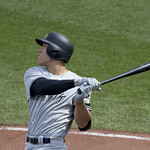



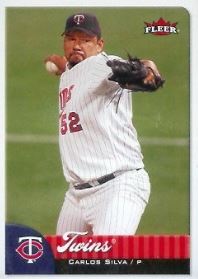

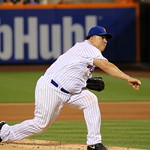
 A pitcher recording four strikeouts in an inning is relatively rare. It’s happened just 90 times in MLB history (There was also one instance of two pitchers combining for four strikeouts in a single frame.) By contrast, there have been 265 official single-pitcher MLB no-hitters, as well as 12 no-hitter spun by multiple pitchers.
A pitcher recording four strikeouts in an inning is relatively rare. It’s happened just 90 times in MLB history (There was also one instance of two pitchers combining for four strikeouts in a single frame.) By contrast, there have been 265 official single-pitcher MLB no-hitters, as well as 12 no-hitter spun by multiple pitchers.
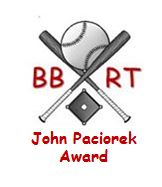
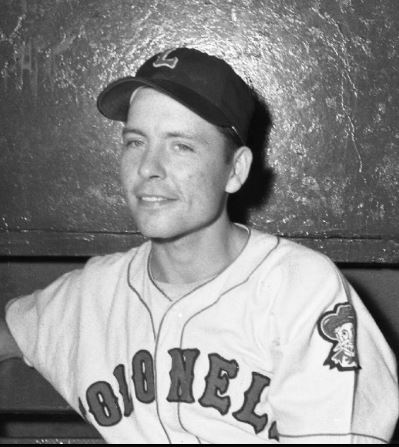
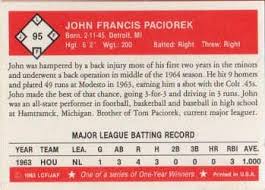
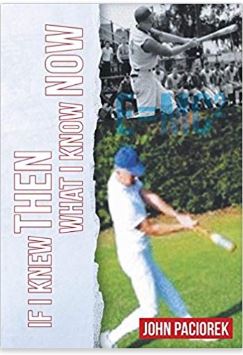 Paciorek, by the way, went on to become a high school teacher and multi-sport coach and is the author of three books (Plato and Socrates – Baseball’s Wisest Fans; The Principles of Baseball: And All There Is To Know About Hitting; and If I Knew Then What I Know Now. You also can enjoy Paciorek’s prose (and expertise) directly at his blog “Paciorek’s Principles of Perfect Practice” by clicking
Paciorek, by the way, went on to become a high school teacher and multi-sport coach and is the author of three books (Plato and Socrates – Baseball’s Wisest Fans; The Principles of Baseball: And All There Is To Know About Hitting; and If I Knew Then What I Know Now. You also can enjoy Paciorek’s prose (and expertise) directly at his blog “Paciorek’s Principles of Perfect Practice” by clicking 

